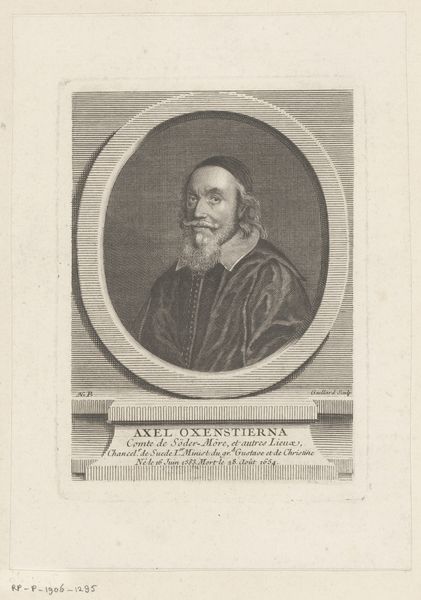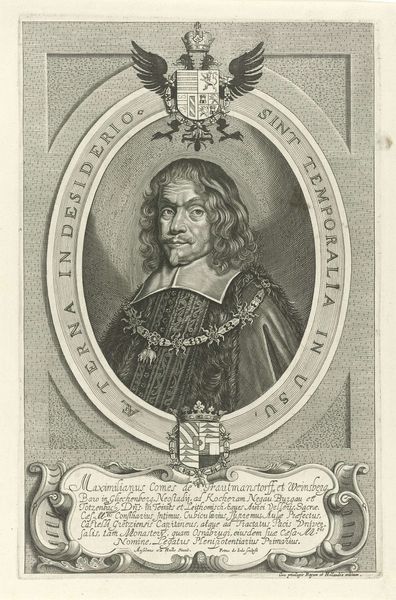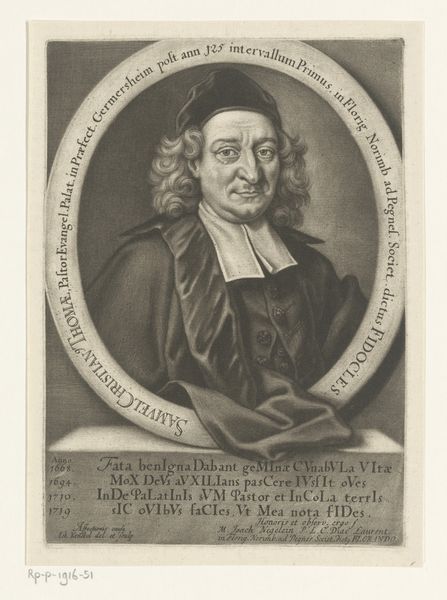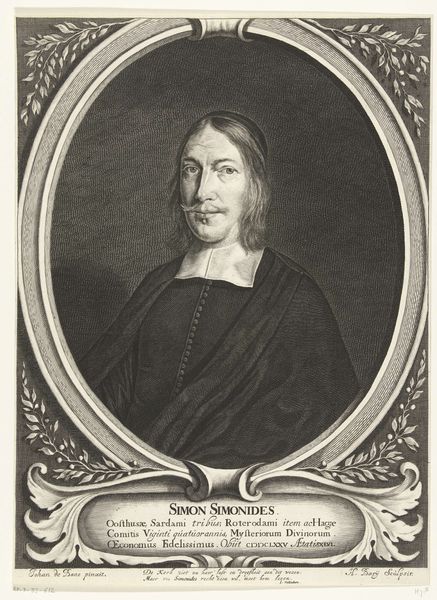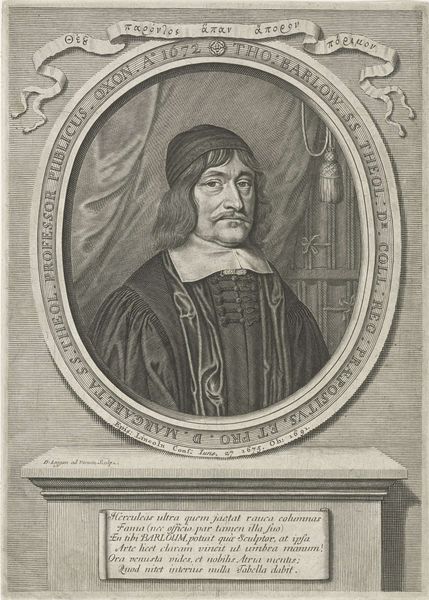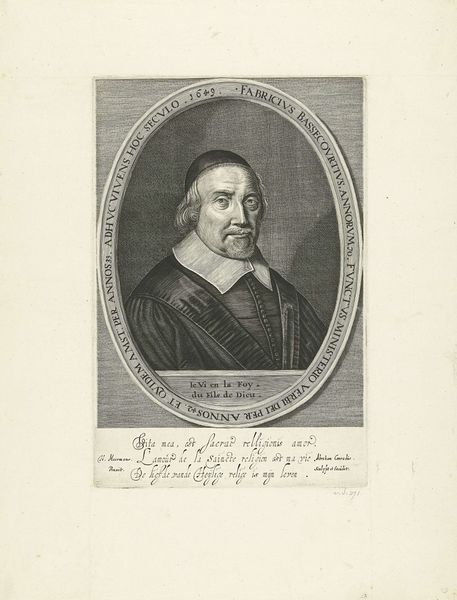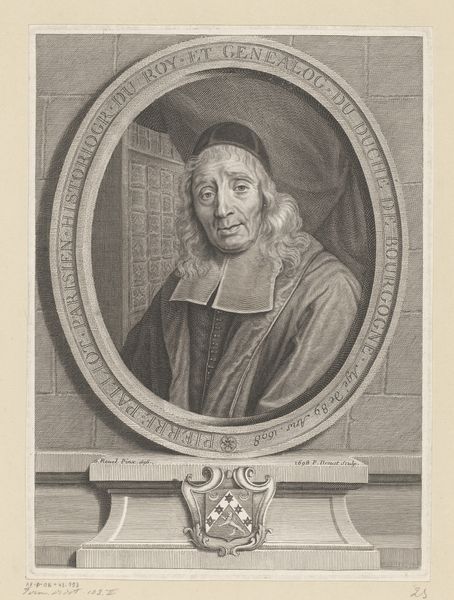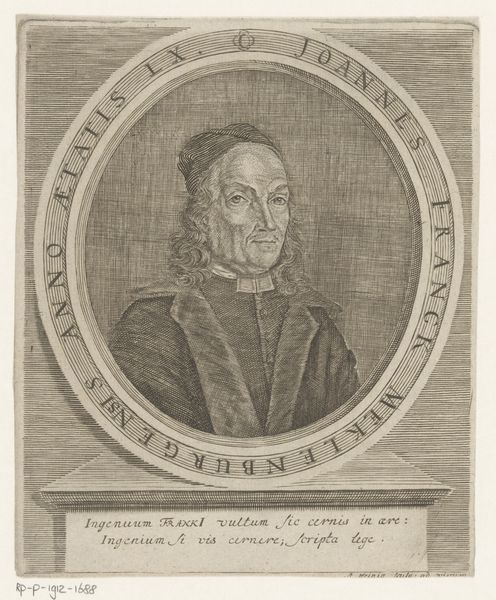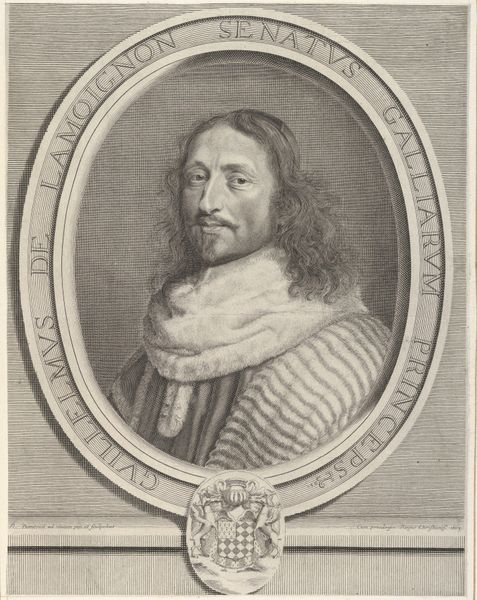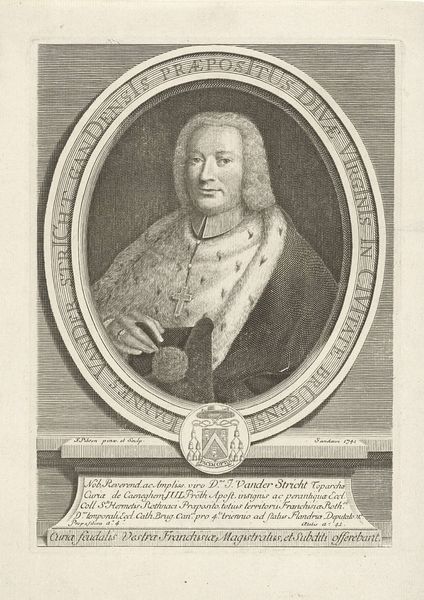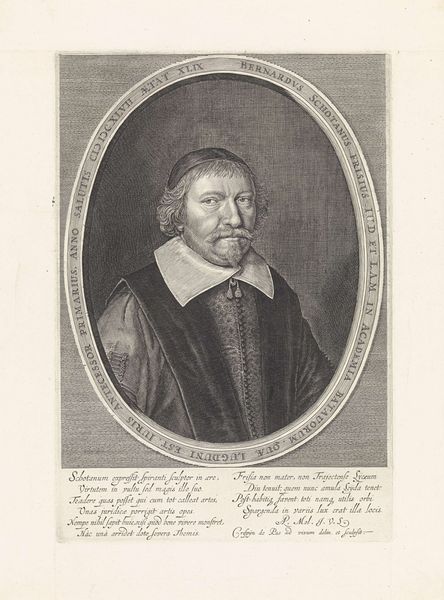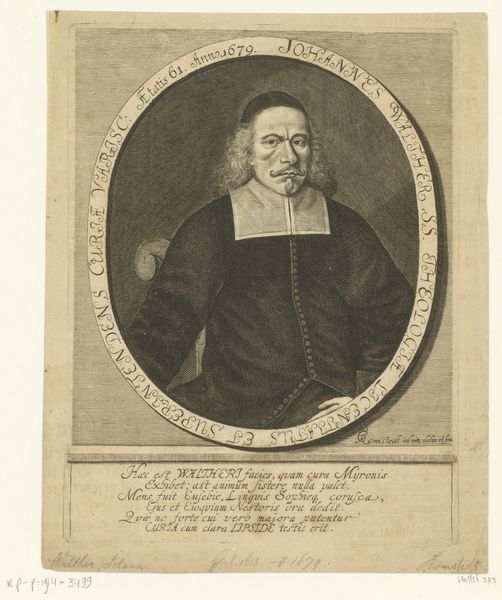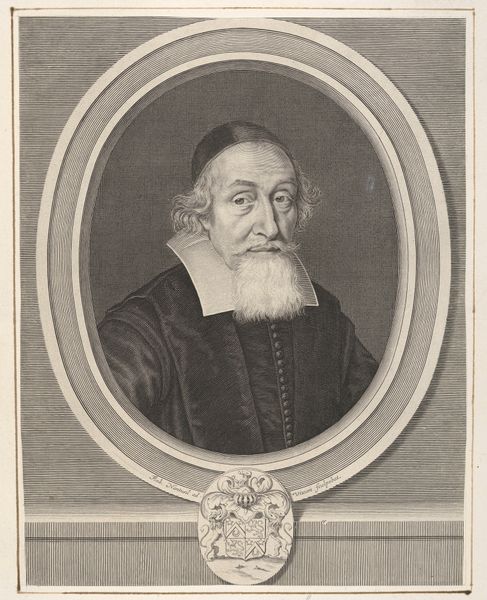
engraving
#
portrait
#
baroque
#
figuration
#
line
#
history-painting
#
engraving
Dimensions: height 320 mm, width 225 mm
Copyright: Rijks Museum: Open Domain
Curator: I'd like to draw your attention to this engraving titled "Portret van Axel Oxenstierna." It’s dated 1652 and was created by Jeremias Falck. Editor: My initial impression is of somber dignity. The subject's gaze is intense, framed by the crisp lines of the engraving. There's a sense of power tempered with… melancholy, perhaps? Curator: Falck, a prominent figure in Baroque printmaking, portrays Oxenstierna, a towering figure in Swedish history. He served as Lord High Chancellor during Sweden's era as a great power. Consider the historical weight he carried during the tumultuous 17th century. Editor: Absolutely. The portrait utilizes strong symbolic visual language. The oval frame containing Oxenstierna suggests containment and preservation, befitting a statesman who aimed to stabilize his nation. The Latin inscription also adds gravitas, hinting at a learned and intellectual mind. But does the stern gaze hint at the sacrifices and political maneuvering required to maintain such power? Curator: Precisely. Oxenstierna played a crucial role in the Thirty Years' War, navigating complex alliances and striving for a Protestant balance of power. The seemingly simple portrait resonates with themes of leadership, responsibility, and the weight of history—concepts still relevant today, when people in positions of authority struggle with power. Editor: Thinking more about the composition, the stark contrast between light and shadow reinforces this duality. The details, particularly in the face and beard, showcase the meticulous craft of the engraver, each line contributing to a persona of resolute strength, but maybe this is the public persona, meant to solidify authority. The simple cap and dark robes suggest the man wanted to emphasize service and perhaps the virtue of humility. Curator: It's in portraits like these that we can unpack and challenge the narratives that society imposes. Portraits solidify the gaze that assigns power through a white, male standard that serves the dominant narrative. Portraits must be challenged and viewed through the spectrum of intersectionality so that their impact is more encompassing and their social role as such. Editor: Your focus adds a fresh perspective. Looking at the image from that viewpoint challenges my reading of his hat, suggesting it could speak to a desire to control the narratives that are created for those outside the circle of authority. The artist has created more than just an official state portrait; it also creates a political image to study in the 21st century.
Comments
No comments
Be the first to comment and join the conversation on the ultimate creative platform.
